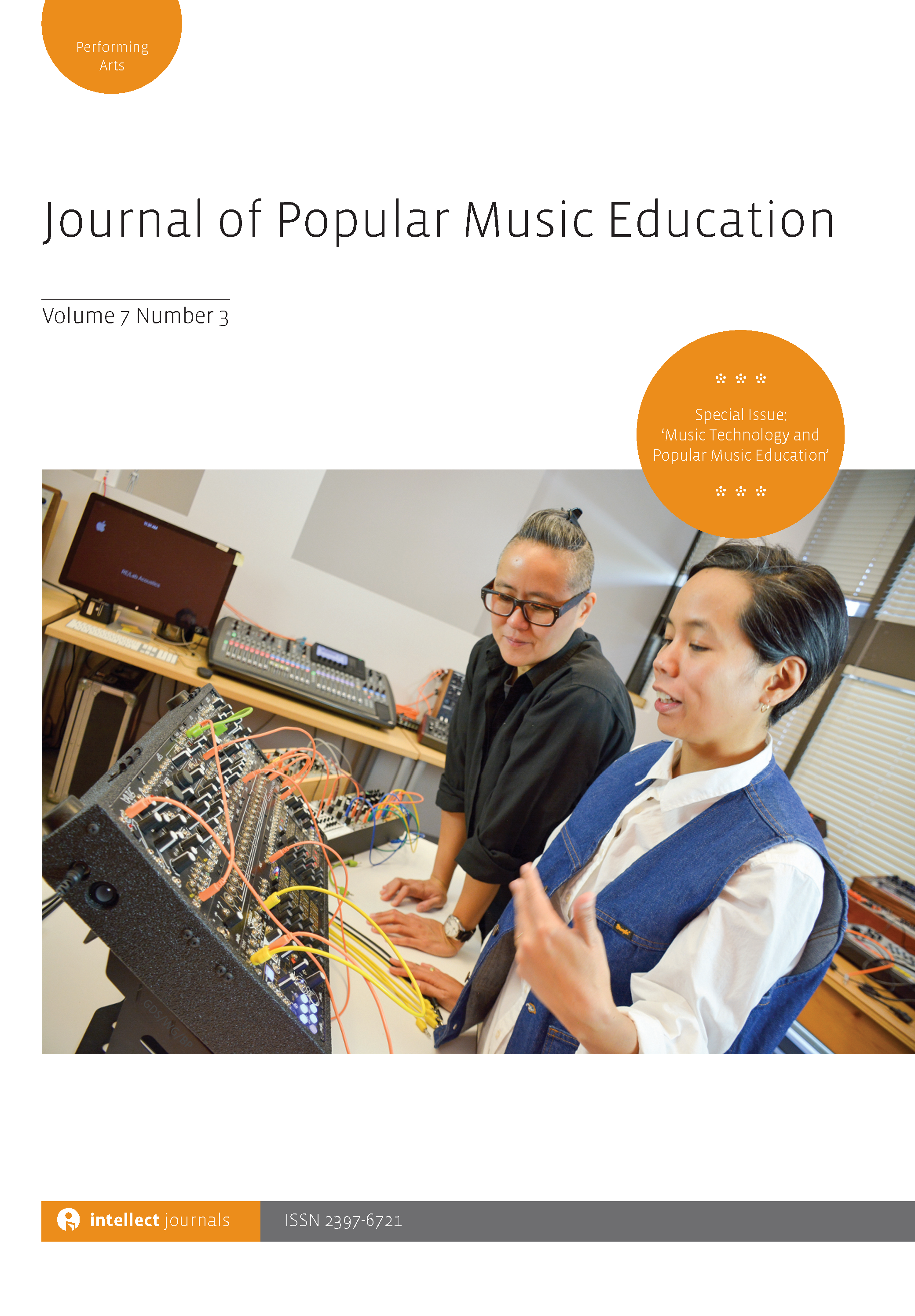
Full text loading...

Musicians’ drive to be productive on the internet led to the development of practices that can inform popular music education. Expanding the concept of popular music education to include online participatory culture practices provides inspiration for musicking online relevant not only in times of uncertainty (like during mandated quarantines experienced during the COVID outbreak in 2020), but also during times of prosperity when practices can be explored in classrooms and during leisure time. In this article, the author discusses three dispositions towards online musicking: DIY-disposition (do-it-yourself), DIWO-disposition (do-it-with-others) and DIFO-disposition (do-it-for-others). The development of these dispositions leads to online and musical literacies that help develop the skills needed for online musicking and performance. This text offers a creation theory about approaching online musicking that can be applied to new technologies and media as online platforms appear and fade on the internet.

Article metrics loading...

Full text loading...
References


Publication Date:
https://doi.org/10.1386/jpme_00018_1 Published content will be available immediately after check-out or when it is released in case of a pre-order. Please make sure to be logged in to see all available purchase options.